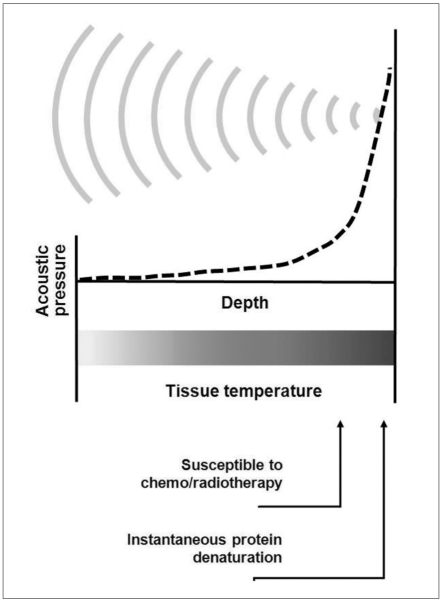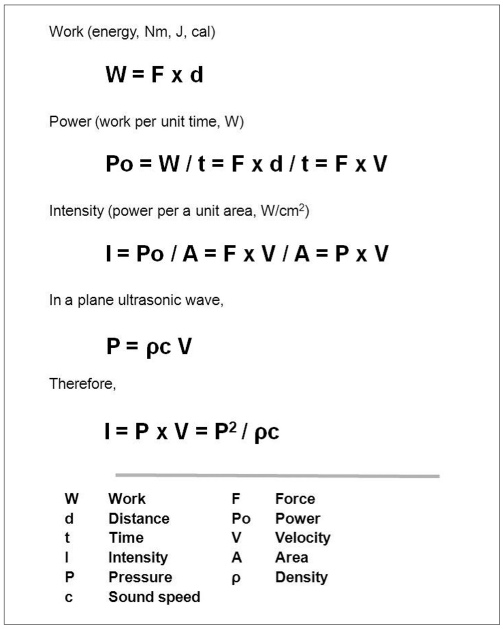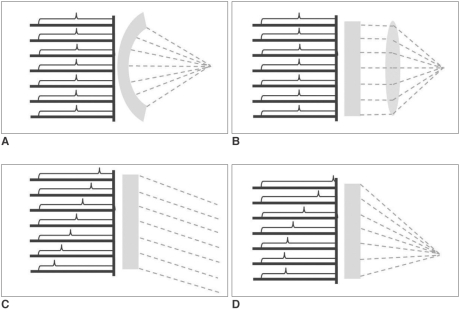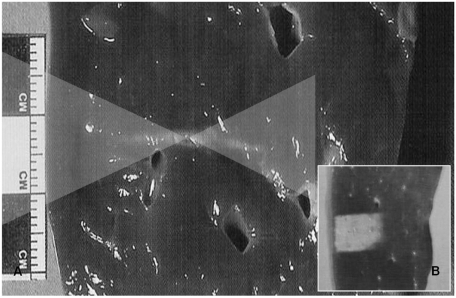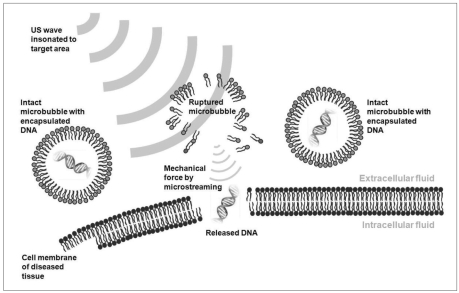Korean J Radiol.
2008 Aug;9(4):291-302. 10.3348/kjr.2008.9.4.291.
High-Intensity Focused Ultrasound Therapy: an Overview for Radiologists
- Affiliations
-
- 1Department of Radiology and Center for Imaging Science, Samsung Medical Center, Sungkyunkwan University School of Medicine, Seoul, Korea. rhimhc@skku.edu
- 2Department of Biomedical Engineering, College of Medicine, Cheju National University, Jeju-si, Korea.
- 3Medical Physics Department, GSST & Division of Medical Imaging, Medical School, King's College London, University of London, UK.
- KMID: 1076454
- DOI: http://doi.org/10.3348/kjr.2008.9.4.291
Abstract
- High-intensity focused ultrasound therapy is a novel, emerging, therapeutic modality that uses ultrasound waves, propagated through tissue media, as carriers of energy. This completely non-invasive technology has great potential for tumor ablation as well as hemostasis, thrombolysis and targeted drug/gene delivery. However, the application of this technology still has many drawbacks. It is expected that current obstacles to implementation will be resolved in the near future. In this review, we provide an overview of high-intensity focused ultrasound therapy from the basic physics to recent clinical studies with an interventional radiologist's perspective for the purpose of improving the general understanding of this cutting-edge technology as well as speculating on future developments.
Keyword
MeSH Terms
Figure
Cited by 1 articles
-
Complication Following Ultrasound-Guided High-Intensity Focused Ultrasound for the Treatment of Uterine Adenomyosis: Case Report of CT Imaging Features
Sang Hyup Hong, Gil-Sun Hong, Choong Wook Lee, Gi Hong Kim
J Korean Soc Radiol. 2019;80(3):579-584. doi: 10.3348/jksr.2019.80.3.579.
Reference
-
1. Wood RW, Loomis AL. The physical and biological effects of high frequency sound waves of great intensity. Philos Mag. 1927; 4:417.2. Feril LB Jr, Kondo T. Biological effects of low intensity ultrasound: the mechanism involved, and its implications on therapy and on biosafety of ultrasound. J Radiat Res. 2004; 45:479–489. PMID: 15635256.3. Lynn JG, Zwemer RL, Chick AJ, Miller AF. A new method for the generation and use of focused ultrasound in experimental biology. J Gen Physiol. 1942; 26:179–193. PMID: 19873337.
Article4. Fry WJ, Barnard JW, Fry FJ, Brennan JF. Ultrasonically produced localized selective lesions in the central nervous system. Am J Phys Med. 1955; 34:413–423. PMID: 14376518.5. Fry FJ. Precision high intensity focusing ultrasonic machines for surgery. Am J Phys Med. 1958; 37:152–156. PMID: 13545382.
Article6. Fry WJ, Fry FJ. Fundamental neurological research and human neurosurgery using intense ultrasound. IRE Trans Med Electron. 1960; ME-7:166–181. PMID: 13702332.
Article7. Madersbacher S, Pedevilla M, Vingers L, Susani M, Marberger M. Effect of high-intensity focused ultrasound on human prostate cancer in vivo. Cancer Res. 1995; 55:3346–3351. PMID: 7542168.8. Dalecki D. Mechanical bioeffects of ultrasound. Annu Rev Biomed Eng. 2004; 6:229–248. PMID: 15255769.
Article9. American institute of ultrasound in medicine, bioeffects committee. Bioeffects consideration of the safety of diagnostic ultrasound. J Ultrasound Med. 1988; 7:S1–S38. PMID: 3054148.10. Crocker MJ. Encyclopedia of acoustics. 1997. 1st ed. New York: John Wiley & Sons;p. 6.11. Nyborg WL. Wu J, Nyborg WL, editors. Mechanisms for bioeffects of ultrasound relevant to therapeutic applications. Emerging therapeutic ultrasound. 2006. 1st ed. Singapore: World Scientific Publishing;p. 5–67.
Article12. ter Haar GR. Therapeutic application of ultrasound. Prog Biophys Mol Biol. 2007; 93:111–129. PMID: 16930682.13. ter Haar GR. Hill CR, Bamber JC, ter Haar GR, editors. Therapeutic and surgical applications. Physical principles of medical ultrasound. 2004. 2nd ed. West Sussex: John Wiley & Sons;p. 407–456.
Article14. Vaezy S, Andrew M, Kaczkowski P, Crum L. Image-guided acoustic therapy. Annu Rev Biomed Eng. 2001; 3:375–390. PMID: 11447068.
Article15. Hynynen K, McDannold N. Wu J, Nyborg WL, editors. MRI-guided focused ultrasound for local tissue ablation and other image-guided interventions. Emerging therapeutic ultrasound. 2006. 1st ed. Singapore: World Scientific Publishing;p. 167–218.
Article16. ter Haar GR. Hill CR, Bamber JC, ter Haar GR, editors. Ultrasonic biophysics. Physical principles of medical ultrasound. 2004. 2nd ed. West Sussex: John Wiley & Sons;p. 348–406.
Article17. Kennedy JE, ter Haar GR, Cranston D. High intensity focused ultrasound: surgery of the future? Br J Radiol. 2003; 76:590–599. PMID: 14500272.
Article18. Crocker MJ. Encyclopedia of acoustics. 1997. 1st ed. New York: John Wiley & Sons;p. 1727.19. Biological Effects of Ultrasound: Mechanisms and Clinical Implications, NCRP Report #74. 1983. National Council on Radiation Protection and Measurements (NCRP).20. Leslie TA, Kennedy JE. High-intensity focused ultrasound principles, current uses, and potential for the future. Ultrasound Q. 2006; 22:263–272. PMID: 17146334.
Article21. Clement GT. Perspectives in clinical uses of high-intensity focused ultrasound. Ultrasonics. 2004; 42:1087–1093. PMID: 15234170.
Article22. ter Haar GR. High intensity focused ultrasound for the treatment of tumors. Echocardiography. 2001; 18:317–322. PMID: 11415504.
Article23. ter Haar GR, Robertson D. Tissue destruction with focused ultrasound in vivo. Eur Urol. 1993; 23:S8–S11.24. Bush NL, Rivens I, ter Haar GR, Bamber JC. Acoustic properties of lesions generated with an ultrasound therapy system. Ultrasound Med Biol. 1993; 19:789–801. PMID: 8134979.
Article25. Vaezy S, Martin R, Crum L. High intensity focused ultrasound: a method of hemostasis. Echocardiography. 2001; 18:309–315. PMID: 11415503.26. Poliachik SL, Chandler WL, Mourad PD, Bailey MR, Bloch S, Cleveland RO, et al. Effect of high-intensity focused ultrasound on whole blood with and without microbubble contrast agent. Ultrasound Med Biol. 1999; 25:991–998. PMID: 10461729.
Article27. Tachibana S, Koga K. Ultrasound boosting effect to thrombolysis. Blood Vessel. 1981; 12:450–453.28. Tachibana S. Vibration for boosting fibrinolytic effect of urokinase. Thromb Haemost. 1981; 46(Suppl.):211A.29. Tachibana K, Tachibana S. The use of ultrasound for drug delivery. Echocardiography. 2001; 18:323–328. PMID: 11415505.
Article30. Alexandrov AV, Molina CA, Grotta JC, Garami Z, Ford SR, Alvarez-Sabin J, et al. Ultrasound-enhanced systemic thrombolysis for acute ischemic stroke. New Eng J Med. 2004; 351:2170–2178. PMID: 15548777.
Article31. Liu Y, Yang H, Sakanishi A. Ultrasound: mechanical gene transfer into plant cells by sonoporation. Biotechnol Adv. 2006; 24:1–16. PMID: 15935607.
Article32. Miller DL, Pislaru SV, Greenleaf JE. Sonoporation: mechanical DNA delivery by ultrasonic cavitation. Somat Cell Mol Genet. 2002; 27:115–134. PMID: 12774945.33. Jolez FA, Hynynen K. Magnetic resonance image-guided focused ultrasound surgery. Cancer J. 2002; 8:S100–S112. PMID: 12075696.34. Hynynen K, McDannold N, Clement G, Jolesz FA, Zadicario E, Killiany R, et al. Pre-clinical testing of a phased array ultrasound system for MRI-guided noninvasive surgery of the brain? A primate study. Eur J Radiol. 2006; 59:149–156. PMID: 16716552.35. Hynynen K, McDannold N, Vykhodtseva N, Jolez FA. Noninvasive MR imaging-guided focal opening of the blood-brain barrier in rabbits. Radiology. 2001; 220:640–646. PMID: 11526261.
Article36. Yu T, Wang G, Hu K, Ma P, Bai J, Wang Z. A microbubble agent improves the therapeutic efficiency of high intensity focused ultrasound: a rabbit kidney study. Urol Res. 2004; 32:14–19. PMID: 14655029.
Article37. Kaneko Y, Maruyama T, Takegami K, Watanabe T, Mitsui H, Hanajiri K, et al. Use of a microbubble agent to increase the effects of high intensity focused ultrasound on liver tissue. Eur Radiol. 2005; 15:1415–1420. PMID: 15739112.
Article38. Hanajiri K, Maruyama T, Kaneko Y, Mitsui H, Watanabe S, Sata M, et al. Microbubble-induced increase in ablation of liver tumors by high-intensity focused ultrasound. Hepatol Res. 2006; 36:308–314. PMID: 16990046.
Article39. Tachibana K, Tachibana S. Albumin microbubble echo-contrast material as an enhancer for ultrasound accelerated thrombolysis. Circulation. 1995; 92:1148–1150. PMID: 7648659.
Article40. Molina CA, Ribo M, Rubiera M, Montaner J, Santamarina E, Delgado-Mederos R, et al. Microbubble administration accelerates clot lysis during continuous 2-MHz ultrasound monitoring in stroke patients treated with intravenous tissue plasminogen activator. Stroke. 2006; 37:425–429. PMID: 16373632.
Article41. Hwang JH, Brayman AA, Reidy MA, Matula TJ, Kimmey MB, Crum LA. Vascular effects induced by combined 1-MHz ultrasound and microbubble contrast agent treatments in vivo. Ultrasound Med Biol. 2005; 31:553–564. PMID: 15831334.
Article42. Zderic V, Brayman AA, Sharar SR, Crum LA, Vaezy S. Microbubble-enhanced hemorrhage control using high intensity focused ultrasound. Ultrasonics. 2006; 45:113–120. PMID: 16949630.
Article43. McDannold NJ, Vykhodtseva NI, Hynynen K. Microbubble contrast agent with focused ultrasound to create brain lesions at low power levels: MR imaging and histologic study in rabbits. Radiology. 2006; 241:95–106. PMID: 16990673.
Article44. Hynynen K, McDannold N, Vykhodtseva N, Jolesz FA. Non-invasive opening of BBB by focused ultrasound. Acta Neurochi Suppl. 2003; 86:555–558.
Article45. Rabkin BA, Zderic V, Vaezy S. Hyperecho in ultrasound images of HIFU therapy: involvement of cavitation. Ultrasound Med Biol. 2005; 31:947–956. PMID: 15972200.
Article46. Rabkin BA, Zderic V, Crum LA, Vaezy S. Biological and physical mechanisms of HIFU-induced hyperecho in ultrasound images. Ultrasound Med Biol. 2006; 32:1721–1729. PMID: 17112958.
Article47. Qian ZW, Xiong L, Yu J, Shao D, Zhu H, Wu X. Noninvasive thermometer for HIFU and its scaling. Ultrasonics. 2006; 44S:E31–E35. PMID: 16844165.
Article48. Souchon R, Rouviere O, Gelet A, Detti V, Srinivasan S, Ophir J, et al. Visualisation of HIFU lesion using elastography of the human prostate in vivo: preliminary results. Ultrasound Med Biol. 2003; 29:1007–1015. PMID: 12878247.49. Hindman JC. Proton resonance shift of water in the gas and liquid states. J Chem Phys. 1996; 44:4582–4592.
Article50. Blana A, Walter B, Rogenhofer S, Wieland WF. High-intensity focused ultrasound for the treatment of localized prostate cancer: 5-year experience. Urology. 2004; 63:297–300. PMID: 14972475.
Article51. Uchida T, Ohkusa H, Yamashita H, Shoji S, Nagata Y, Hyodo T, et al. Five years experience of transrectal high-intensity focused ultrasound using the Sonablate device in the treatment of localized prostate cancer. Int J Urol. 2006; 13:228–233. PMID: 16643614.
Article52. Poissonnier L, Chapelon JY, Rouviere O, Curiel L, Bouvier R, Martin X, et al. Control of prostate cancer by transrectal HIFU in 227 patients. Eur Urol. 2007; 51:381–387. PMID: 16857310.
Article53. Gelet A, Chapelon JY, Poissonnier L, Bouvier R, Rouviere O, Curiel L, et al. Local recurrence of prostate cancer after external beam radiotherapy: early experience of salvage therapy using high-intensity focused ultrasonography. Urology. 2004; 63:625–629. PMID: 15072864.
Article54. Stewart EA, Rabinovici J, Tempany CM, Inbar Y, Regan L, Gostout B, et al. Clinical outcomes of focused ultrasound surgery for the treatment of uterine fibroids. Fertil Steril. 2006; 85:22–29. PMID: 16412721.
Article55. Hindley J, Gedroyc WM, Regan L, Stewart E, Tempany C, Hynynen K, et al. MRI guidance of focused ultrasound therapy of uterine fibroid: early results. AJR Am J Roentgenol. 2004; 183:1713–1719. PMID: 15547216.56. Smart OC, Hindley JT, Regan L, Gedroyc WG. Gonadotrophin-releasing hormone and magnetic-resonance-guided ultrasound surgery for uterine leiomyomata. Obstet Gynecol. 2006; 108:49–54. PMID: 16816055.
Article57. Wu F, Wang ZB, Zhu H, Chen WZ, Zou JZ, Bai J, et al. Extracorporeal high intensity focused ultrasound treatment for patients with breast cancer. Breast Cancer Res Treat. 2005; 92:51–60. PMID: 15980991.
Article58. Furusawa H, Namba K, Thomsen S, Akiyama F, Bendet A, Tanaka C, et al. Magnetic resonance-guided focused ultrasound surgery of breast cancer: reliability and effectiveness. J Am Coll Surg. 2006; 203:54–63. PMID: 16798487.
Article59. Kennedy JE, Wu F, ter Haar GR, Gleeson FV, Phillips RR, Middleton MR, et al. High-intensity focused ultrasound for the treatment of liver tumors. Ultrasonics. 2004; 42:931–935. PMID: 15047409.60. Wu F, Wang ZB, Chen WZ, Zhu H, Bai J, Zou JZ, et al. Extracorporeal high intensity focused ultrasound ablation in the treatment of patients with large hepatocellular carcinoma. Ann Surg Oncol. 2004; 11:1061–1069. PMID: 15545506.
Article61. Wu F, Wang ZB, Chen WZ, Zou JZ, Bai J, Zhu H, et al. Advanced hepatocellular carcinoma: treatment with high-intensity focused ultrasound ablation combined with transcatheter arterial embolization. Radiology. 2005; 235:659–667. PMID: 15858105.
Article62. Wu F, Wang ZB, Zhu H, Chen WZ, Zou JZ, Bai J, et al. Feasibility of US-guided high-intensity focused ultrasound treatment in patients with advanced pancreatic cancer: initial experience. Radiology. 2005; 236:1034–1040. PMID: 16055692.
Article63. Wu F, Wang ZB, Chen WZ, Bai J, Zhu H, Qiao TY. Preliminary experience using high intensity focused ultrasound for the treatment of patients with advanced stage renal malignancy. J Urol. 2003; 170:2237–2240. PMID: 14634387.
Article64. Wu F, Wang ZB, Chen WZ, Wang W, Gui Y, Zhang M, et al. Extracorporeal high intensity focused ultrasound ablation in the treatment of 1038 patients with solid carcinomas in China: an overview. Ultrason Sonochem. 2004; 11:149–154. PMID: 15081972.
Article65. Kratzik C, Schatzl G, Lackner J, Marberger M. Transcutaneous high-intensity focused ultrasonography can cure testicular cancer in solitary testis. Urololgy. 2006; 67:1269–1273.
Article66. Ram Z, Cohen ZR, Harnof S, Tal S, Faibel M, Nass D, et al. Magnetic resonance imaging-guided, high-intensity focused ultrasound for brain tumor therapy. Neurosurgery. 2006; 59:949–956. PMID: 17143231.67. Li JJ, Xu GL, Gu MF, Luo GY, Rong Z, Wu PH, et al. Complications of high intensity focused ultrasound in patients with recurrent and metastatic abdominal tumors. World J Gastroenterol. 2007; 13:2747–2751. PMID: 17569147.
Article68. Mougenot C, Salomir R, Palussiere J, Grenier N, Moonen CT. Automatic spatial and temporal temperature control for MR-guided focused ultrasound using fast 3D MR thermometry and multispiral trajectory of the focal point. Magn Reson Med. 2004; 52:1005–1015. PMID: 15508173.
Article69. de Senneville BD, Mougenot C, Moonen CT. Real-time adaptive method for treatment of mobile organs by MRI-controlled high-intensity focused ultrasound. Magn Reson Med. 2007; 57:319–330. PMID: 17260361.
- Full Text Links
- Actions
-
Cited
- CITED
-
- Close
- Share
- Similar articles
-
- Current status of high-intensity focused ultrasound for the management of uterine adenomyosis
- Spontaneous Uterine Rupture during Second Trimester Pregnancy after High-intensity Focused Ultrasound
- Adaptive singular value decomposition filtering of high-intensity focused ultrasound interference enables real-time ultrasound-guided therapy
- High-intensity focused ultrasound ablation as a treatment for benign thyroid diseases: the present and future
- Focused ultrasound and prostate cancer


